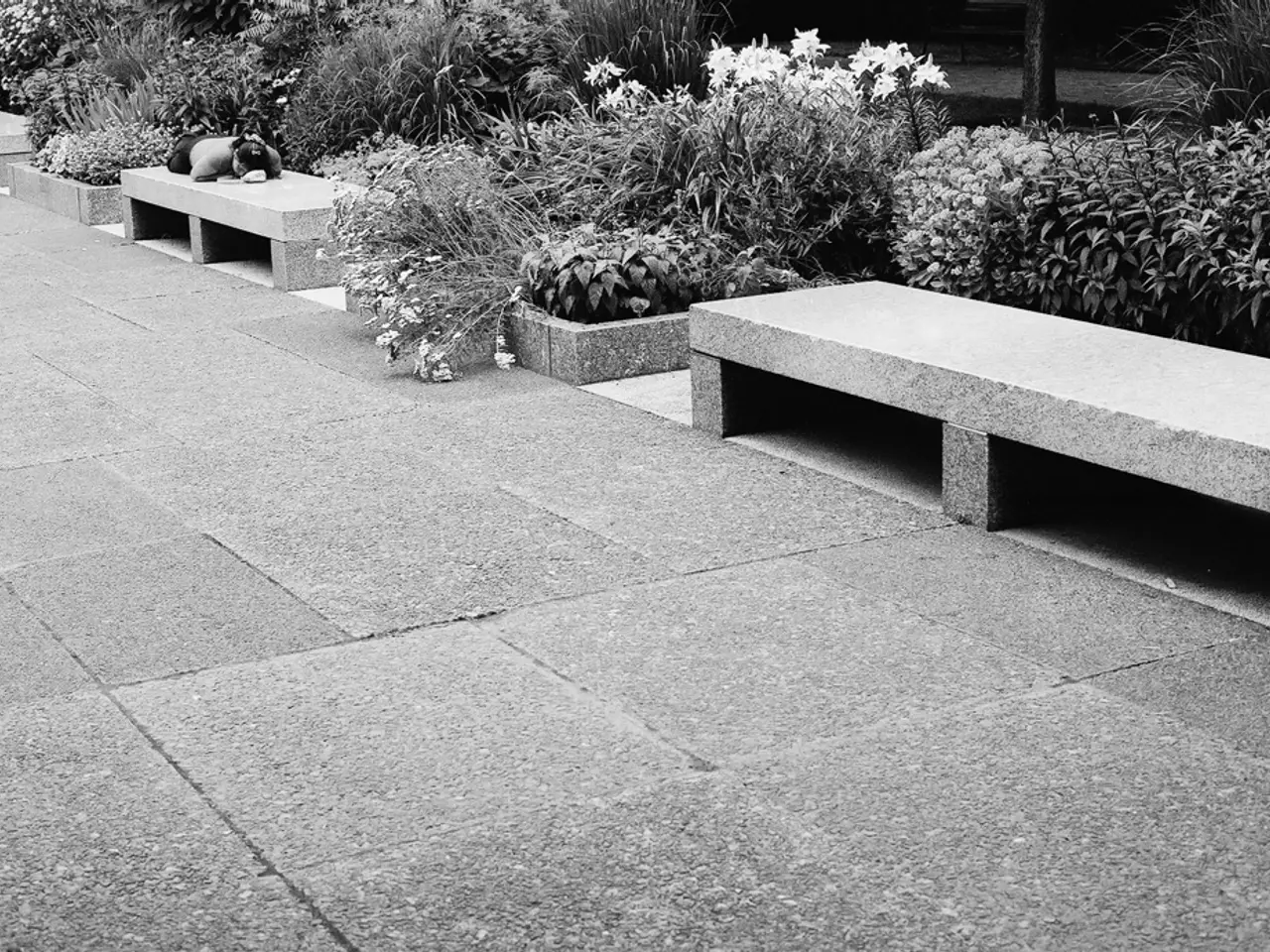Comparison of Elevated Planting Structures: Raised Beds vs Containers
In the world of gardening, there are two popular methods for growing plants – raised garden beds and container gardens. While they share some similarities, each approach has unique advantages and considerations.
Raised garden beds, as the name suggests, are elevated structures in a garden, designed to provide a growing area for plants. They can come in various sizes and shapes, and their connection to the surrounding soil allows them to tap into the existing soil life. If the soil under a raised bed is not ideal, the lasagna gardening method can be employed to improve it. In a cold climate, raised beds are often preferred due to their ability to warm up the soil better and the ease of adding protection from frost.
On the other hand, container gardens are not connected to the earth and the soil has to be contained within them. They offer the advantage of being portable, making them suitable for small-scale gardening in limited spaces such as patios, decks, driveways, parking spaces, balconies, and even indoors. Weed control fabric under an open garden bed can transform it into a container garden.
The quality of the soil is crucial in both types of gardening, but it is the gardener's responsibility in a container garden. The soil in a raised bed should ideally be loose and contain earthworms, indicating an open raised bed. If the soil is rock-hard, it needs to be redone, and natural material like straw, compost, and soil can be added to loosen it up. In contrast, the container soil should have three components: a light growing medium, a moisture retainer, and a fertilizer.
The key differences between the two lie in size, soil control, plant selection, mobility, and root growth management. Raised garden beds offer a larger growing area, allowing for multiple plants and ideal for annuals and vegetables that require more space. Soil quality can be customized and improved extensively in raised beds. Container gardens, however, are typically smaller and portable, suitable for small-scale gardening and can be moved easily. The soil volume in container gardens is limited, requiring careful soil choice and frequent fertilization.
Plant selection varies based on the space available. Raised beds are best suited for plants that benefit from more extensive root systems and medium to large growth. Container gardens, on the other hand, are ideal for dwarf or compact plants and those tolerant of confined root zones. Fabric pots can encourage healthier root systems by preventing root circling in container gardens.
Mobility is another factor that distinguishes the two. Raised garden beds are usually permanent or semi-permanent, set up in a fixed garden location. Container gardens, however, are highly portable, making it possible to adjust sun exposure or bring plants indoors as needed.
Root growth also differs between the two. Roots in raised beds grow naturally in soil without restrictions, promoting strong plant health over time. In contrast, container roots can become root-bound if the container size is insufficient, but fabric pots or specialized containers help prune roots and encourage branching.
In summary, raised beds are better for more extensive, stationary gardening with larger plants and deeper soil, while container gardens offer portability and are better suited for limited spaces and smaller or compact plants with root management techniques like fabric pots to enhance growth. Whether you opt for raised beds or container gardens, remember that a well-prepared soil, regular care, and patience will lead to a thriving garden.
- Raised garden beds, despite being disconnected from the surrounding soil in some instances, can still tap into existing soil life thanks to their connection to the ground.
- The no-till lasagna gardening method can be employed to improve the soil under a raised bed when the existing soil is not ideal for plant growth.
- Container gardens, which are not connected to the earth, require the gardener to manage the soil within the containers, ensuring it contains a light growing medium, moisture retainer, and fertilizer.
- In cold climates, raised garden beds are often preferred due to their ability to warm up the soil faster and the ease of adding protection from frost compared to container gardens.
- Greenhouse gardening can be considered a combination of raised garden beds and container gardening, as it involves growing plants in raised beds within a controlled environment, such as a home or a home-and-garden setting.




